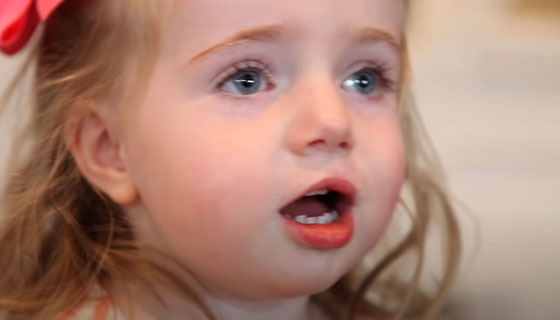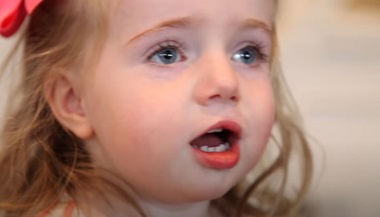Frontonasal Dysplasia, Craniofrontonasal Dysplasia, and Tessier Clefts
What are frontonasal dysplasia, craniofrontonasal dysplasia and Tessier clefts?
Frontonasal dysplasia is a condition that causes a cleft in a person’s nose and abnormal widening between the eyes (hypertelorism). Craniofrontonasal dysplasia is a condition that may cause similar abnormalities, as well as craniosynostosis, a condition affecting growth of the bones of the skull.
Tessier clefts are a collection of related conditions that cause clefts or defects in the soft tissues and bones of the face. These are more severe and follow different patterns than the common form of cleft lip and palate. Tessier clefts may affect the upper lip, nose, tear ducts, upper and lower eyelids, bones around the eye, skull, cheekbones, and corner of the mouth.
What causes frontonasal dysplasia, craniofrontonasal dysplasia and Tessier clefts?
Frontonasal dysplasia is caused by a mutation in a family of genes. The condition may be inherited in an autosomal dominant pattern (one abnormal gene copy is needed) or in an autosomal recessive pattern (two abnormal gene copies are needed), depending on the gene involved. Additionally, new cases may arise spontaneously in families with no previously affected members.
Craniofrontonasal dysplasia is caused by a gene on the X chromosome. It may occur spontaneously or may be inherited in an X-linked pattern. Interestingly, unlike most X-linked conditions, it affects females more significantly than males. The cause of Tessier clefts is not yet known.
What are the symptoms of frontonasal dysplasia, craniofrontonasal dysplasia and Tessier clefts?
Frontonasal dysplasia and craniofrontonasal dysplasia cause a deformity of the nose and increased distance between the eyes. Patients may have imbalance of the eye muscles either before and/or after surgery to correct their eye position (hypertelorism). Patients with craniofrontonasal dysplasia may have craniosynostosis, and may develop an abnormal head shape and elevated intracranial pressure as a result of this condition. Tessier clefts may cause different symptoms, depending on their location and the severity of the cleft. These symptoms may involve difficulty with feeding, speaking, airway obstruction, eye closure, tearing and other concerns.
How are patients with frontonasal dysplasia, craniofrontonasal dysplasia and Tessier clefts evaluated?
Patients with syndromic craniosynostosis require evaluation by a team of specialists including a pediatric plastic surgeon, pediatric neurosurgeon, a pediatric ophthalmologist, a pediatric ENT specialist, a pediatrician, a geneticist, a pediatric dentist, an orthodontist, an audiologist and a speech therapist.
Your surgeon will order imaging studies to examine the bones of the skull and brain. These studies will likely include a CT scan and/or an MRI. Eye exams are important to look for signs of increased intracranial pressure and to ensure your child is seeing well in both eyes. Patients with Tessier clefts involving their tear ducts or eyelids need special attention paid to their vision and eye protection. They will also need to see an ophthalmologist.
How are patients with frontonasal dysplasia, craniofrontonasal dysplasia and Tessier clefts treated?
Patients with craniofrontonasal dysplasia will need surgery to treat their craniosynostosis, if this condition is present. Patients may undergo minimally invasive suturectomy surgery between 2 and 5 months of age, followed by nine to 12 months of continued use of a molding helmet. Older patients undergo an open operation to rearrange the bones of the skull and enlarge the head. It is usually not necessary to wear a helmet following this operation.
Patients with a cleft of their nose from frontonasal dysplasia, craniofrontonasal dysplasia and Tessier clefts may undergo surgery to fix the nose during their first one to two years of life. Often at least one revision surgery is needed, and most patients will benefit from a rhinoplasty or nasal bone graft as teenagers when they are done growing.
Surgery to correct an abnormal distance between the eyes (hypertelorism) is generally done after 6–8 years of age. Surgery performed before this age may be appropriate, but has a higher risk of needing to be done again. This procedure is done in combination with a plastic surgeon and a neurosurgeon, and involves moving the bones surrounding the eyes closer together and removing abnormal and excess bone between them.
Patients with Tessier clefts require a specialized plan to correct their deformities. Clefts of the upper lip and nose are often corrected with techniques similar to those used to correct common cleft lip and palate conditions. Surgery may be necessary early to reconstruct the eyelids to protect the eye. Before corrective surgery, eye drops and ointment are critical to keep the eye moist and prevent blindness if the child is unable to close their eye.
Additional procedures — such as bone grafts to the bones around the eye, nose, jaw or skull — may be needed. Patients with hypertelorism require surgery to correct this around 6–8 years of age. Procedures to rearrange facial tissue or fat grafting to improve contours may be helpful.
Many patients with these three conditions will need orthognathic surgery to improve how their jaw fits together and to enhance their facial appearance. These treatments will be carried out as a team that includes your child’s plastic surgeon, orthodontist and dentist.





